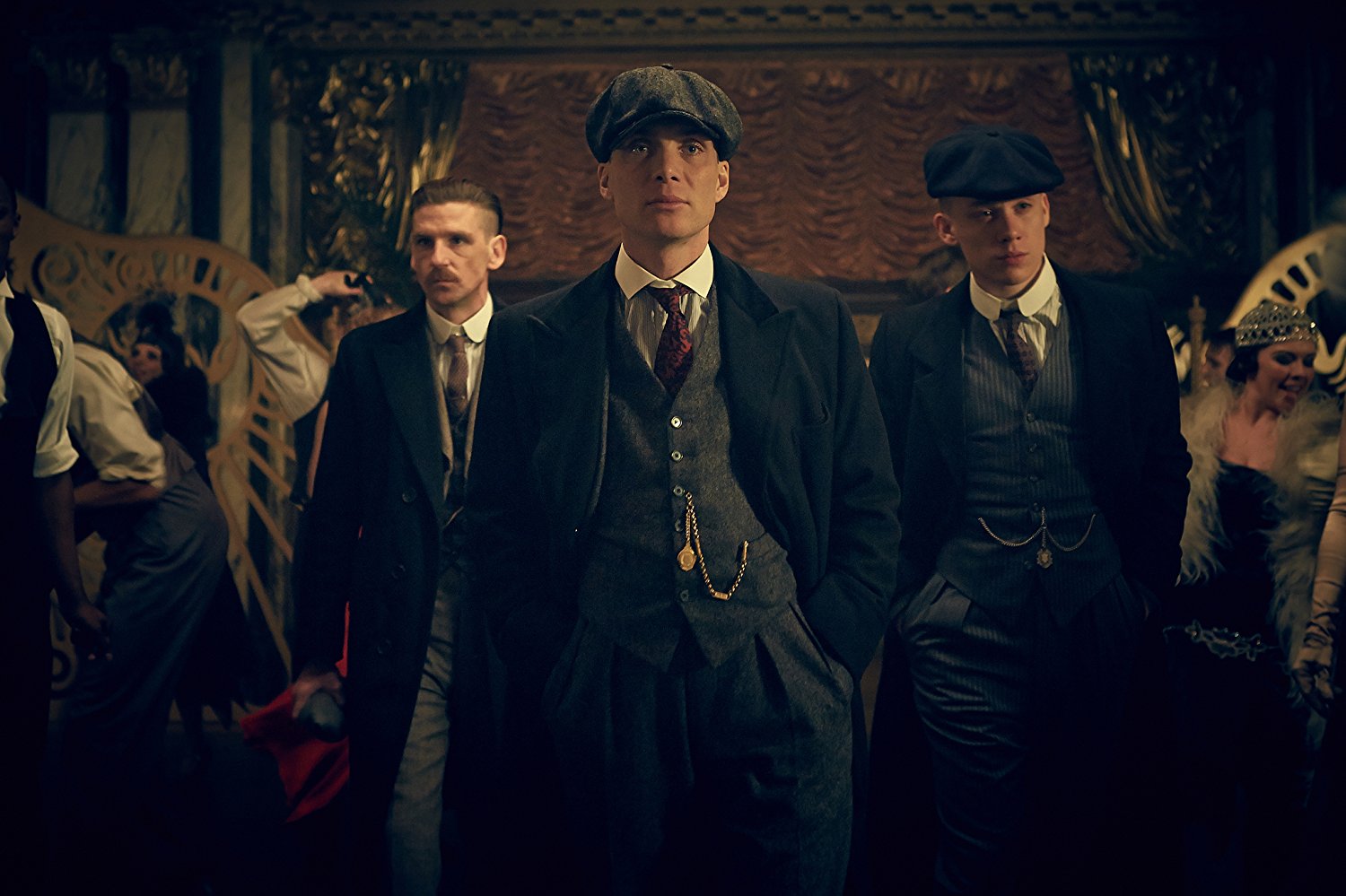Peaky Blinders (2013) is a show that isn’t underrated at all, but rather is talked about only by people who have seen it—you either know it and love it or you haven’t even heard of it. I have made it my life’s mission to tell as many people as possible about what I consider to be one of the greatest shows on television.
Peaky Blinders starts off in 1919 Birmingham, England in a town called Small Heath. The main characters, the Shelbys, are the town’s local crime syndicate, who demand protection fees from stores, run an illegal gambling den, and pay the police, or “coppers” as they call them, to look the other way, amongst other questionable activities. The Shelbys go by the nickname “Peaky Blinders,” a name that comes from the razor blades they keep in their newspaper-style caps to blind their enemies in a fight—a detail that would seem implausible if not for the fact that the writers based this detail on an actual Birmingham gang.
The three eldest Shelby boys have just returned from fighting the WWI front in France, like all other men in Birmingham, and the ghost of the war is ever-present. Arthur (Paul Anderson), the eldest brother, is the most violent and aggressive of the family, always up for a fight yet serious in his traditional role as head of the family. John (Joe Cole), the third brother, is a widower with four kids and while always ready to get in the mix for the family business, prioritizes the well-being of his children. Ada (Sophie Rundle), the only sister, is the de facto princess of Birmingham in four-inch heels, yet hides a forbidden love with a Communist instigator. Aunt Polly (Helen McCrory) is a woman hardened by a tough life—she ran the business while the men were away fighting and serves as a mother figure, advisor, and treasurer to the gang. Finally, Thomas Shelby is the second brother, the real brains behind the operation. He is played incredibly well by Cillian Murphy (pronounced Kil-ian) who has played in a vast range of roles from The Scarecrow in The Dark Knight Trilogy to a nameless, terrified soldier in Dunkirk (2017). Tommy returned from France unsmiling and scarred, and he throws every ounce of his pain and misery into growing the Peaky Blinders into the empire he dreams it could be.
A ruthless Detective Inspector fresh from using military tactics to terrorize the IRA, even though he himself did not go to war (an important detail to all the men who did) is sent to Birmingham, setting the show into motion. Said Inspector, Campbell (Sam Neill), is looking for a shipment of machine guns and ammunition that were bound for Libya and have now fallen into unknown hands. Another new arrival is Grace (Annabelle Wallis), an Irish girl with a shady past who is hired as the barmaid at the Garrison, the Shelby’s favorite watering hole. While Tommy walks around with a dark cloud over his head, Grace radiates a feeling of warmth that has rarely been seen since the war.
Tommy Shelby won Gallantry medals in the First World War and threw them in The Cut upon his return. The Great War permeates into every aspect of daily life, and everyone is traumatized by the horror it was. The show successfully captures the characters’ desire to go back to ‘normal,’ and the frustration they feel that things can never be the same. Medals mean nothing if they dream of being attacked in an underground tunnel, spending their nights watching their friends die over and over again.
Peaky Blinders is about gang wars, love, and family. The plots are complicated and intelligent, and pieces set in place in the first episode are only understood in the last episode—the audience is on the edge of their seats as incredible victories and downfalls happen in the characters’ lives. The shots are beautiful—even in the grimy small town of Birmingham. An iconic scene of Grace arriving into Small Heath features her walking alone into a mud and soot covered street, the snow floating around her slowly, creating a stunning and serene scene that centers on the only touch of color—her green skirt and jacket. The close-ups, the angles, the sets: Everything is artfully done and enhances the experience of the story for the viewer with an attention to detail that isn’t present on most television shows.
Machinery is often present, rumbling and clanking in the background. Factories, gypsies, and horses all have parts to play in the overarching story. The language is blunt and occasionally crude, but not gratuitously. The epoch ambiance is crucial: the creators of the show have everything from the outfits to the automobiles, and in a way that seems genuine rather than choreographed.
The music style is most often anachronistic with artists like Nick Cage and Arctic Monkeys heavily featured. The modern sound amps up the story—when there is a fight scene, or a decision scene, or any kind of action that is meant to excite the viewer—creating an energy that engages them to the point they feel they are actually with the characters. When it’s not that, it’s an ethereal soft piano music that transports the audience into the emotion of the character or away from the horror that is happening.
Peaky Blinders has a plot that is constantly demanding the audience’s full attention, but viewers give it willingly because the scenes and music are beautifully coordinated and make for a captivating watch. The actors are phenomenal and convey complex performances that leave the audience unsure whether they are always rooting for the good bad-guy or sometimes for the bad good-guy.
Image Credits: IMDb





